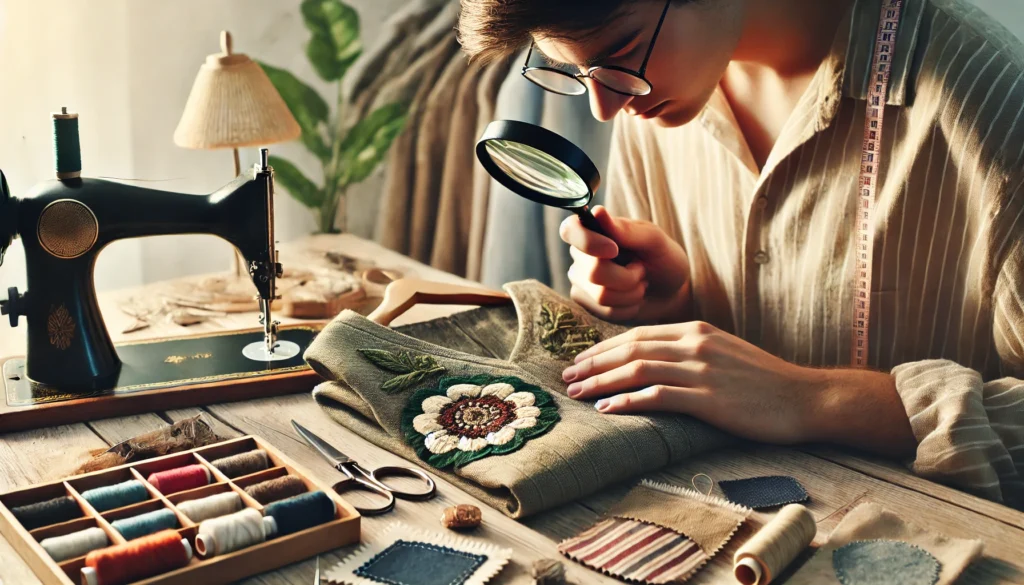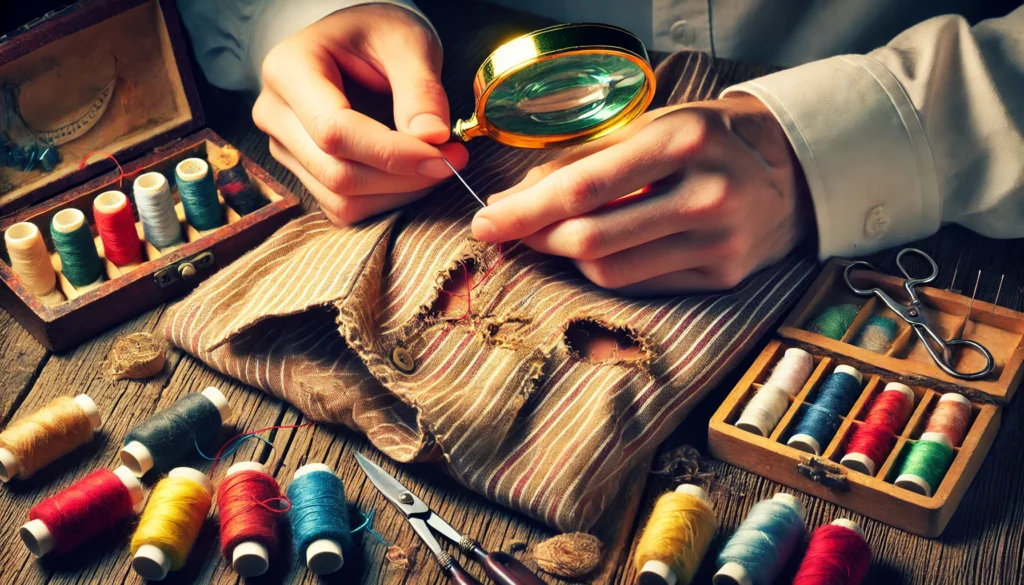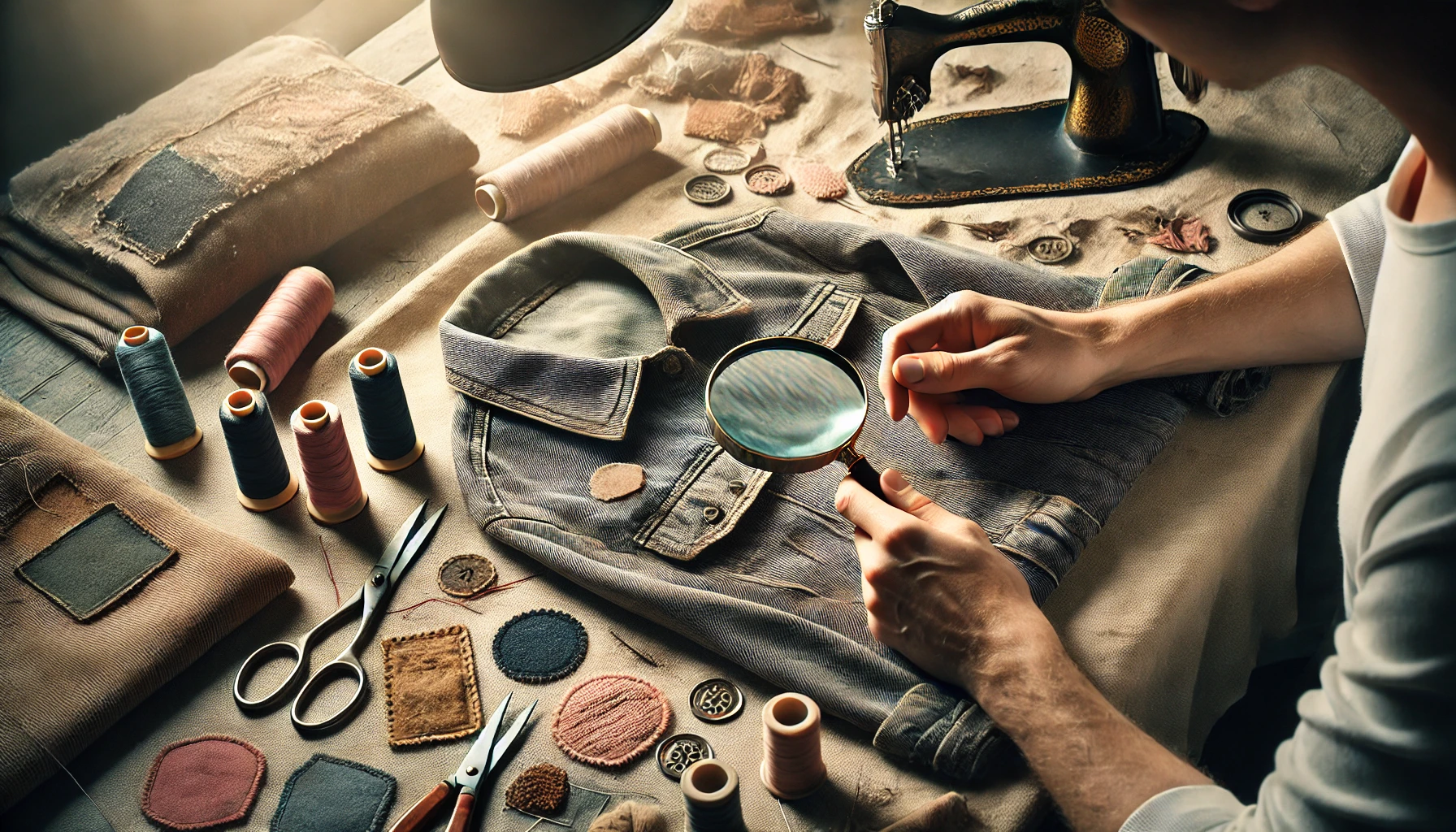We’ve all come across a secondhand clothing treasure that’s just too good to pass up, but what happens when we discover a flaw? Whether it’s a loose seam, a hidden stain, or a broken zipper, these minor imperfections shouldn’t deter us from embracing the sustainability and uniqueness of thrift shopping. Luckily, with a keen eye and some basic sewing skills, we can easily rectify these issues. Let’s discuss simple techniques for identifying and mending these small glitches, ensuring our pre-loved finds can continue their style journey with us. After all, isn’t it intriguing to think that a little TLC can breathe new life into forgotten fashion?
Recognizing Common Secondhand Clothing Flaws

When we’re combing through racks of secondhand clothing, it’s important to keep a keen eye out for common flaws. We’ve all experienced the disappointment of finding a fantastic vintage shirt, only to discover fabric pilling or a broken seam. These issues can often be overlooked in the excitement of a great find.
Fabric pilling is a common issue with secondhand clothing. These little balls of fuzz can make a garment look worn and unattractive. However, don’t let this deter you from a potential gem. Pilling can often be fixed with a bit of patience and the right tools.
Seams are a vital part of the garment’s structure, and seam integrity is another thing we need to watch. Over time, seams can weaken, causing them to split. When inspecting a garment, we run our fingers along the seams to feel for any loose threads or gaps.
Let’s not forget about the hidden flaws. Ever found a perfect jacket, but the lining was ripped? Or that cute dress with a broken zipper? These flaws can be deal-breakers, but with the right knowledge and a bit of effort, they can be fixed.
Techniques for Inspecting Pre-Loved Garments

One often wonders how to properly inspect pre-loved garments for hidden flaws. We’re here to demystify that process for you. It’s not as tricky as you might think, folks!
First off, pay attention to fabric types. Delicate materials like silk or lace require a careful eye. Run your fingers lightly across the fabric, feeling for any irregularities. Watch out for thinning areas, as they’re often precursors to holes.
Next, the clothing labels are your best friends. They’ll tell you what the garment is made of and how to care for it. If the label’s missing or faded, that might be a red flag.
Now don’t forget to check the seams and hems. A loose thread here or there isn’t a deal-breaker, but watch out for major unravelling.
Remember, natural light is your ally in this mission. It will help highlight any subtle stains or discoloration that might be lurking.
Finally, give it a good sniff. Musty smells can indicate mold or mildew.
And there you have it! With these techniques, you’re well on your way to becoming a seasoned secondhand clothing inspector! The thrill of the hunt is half the fun, isn’t it?
Essential Tools for Clothing Repair

Diving headfirst into the world of clothing repair, we need to equip ourselves with the right tools. You might be thinking, “I can’t sew a button, let alone fix a tear!” Don’t worry, we’ve you covered.
Firstly, we must gather our sewing supplies. This includes needles, thread, scissors, seam ripper, and a thimble for those pesky needles that seem to have a mind of their own. A good fabric glue can also come in handy for quick fixes.
We’re not aiming for couture-level sewing here, just functional repairs that’ll extend the life of our clothes.
Next, let’s talk about repair techniques. Knowing a few basic stitches can be a game-changer. The straight stitch is ideal for repairing seams, while the backstitch is great for stronger, more durable repairs.
And remember, practice makes perfect. So, don’t fret if your first few stitches look like a seven-legged spider’s web.
Practical Guide to Mending Minor Damage

Now that we’re armed with the right tools and techniques, let’s tackle the task of mending minor damage in our secondhand clothing.
Mending is a fantastic, thrifty way to extend the life of your clothes, and it’s easier than you might think!
Here are some practical steps to mend minor damage:
- Identify the fabric type: It’s important to know what you’re working with. Cotton, silk, or synthetic fabric each requires a different approach.
- Choose the right stitching technique: Simple running stitches can fix most tears, but for heavier fabrics, you might need a backstitch.
- Prepare the area: Iron the clothing item flat. This makes it easier to work with.
- Do the stitch: Thread your needle and start your stitch from the inside of the fabric to hide the knot.
- Secure the stitch: Once you’re done, secure the stitch by tying a knot on the inside.
With these tips, we’re confident that you can tackle any minor clothing repairs that come your way.
Preserving the Quality of Thrifted Finds

Let’s turn our focus to preserving the quality of our thrifted finds. It may seem like a challenging task, but with some fabric care knowledge and thrift tips, we can keep our secondhand gems looking fresh and fabulous.
We’ve all been there – we’ve found a beautiful vintage dress or a cool graphic tee at a thrift store, only for it to lose its charm after a few washes. That’s where fabric care comes in. Always check the care label before washing. Handwashing delicate fabrics can extend their life.
Also, air drying instead of using a dryer can prevent shrinkage and fading.
Remember, not all stains are deal-breakers. Some can be easily removed with a little bit of effort and the right stain remover. But, if you’re dealing with stubborn stains, it might be best to leave it to the professionals.
Finally, storing your thrifted finds properly is critical. Hang up clothes that can wrinkle, fold heavy items like sweaters to prevent stretching, and keep them away from direct sunlight to avoid color fading.
Preserving the quality of thrifted finds isn’t a mystery. It’s all about care, attention, and a little bit of love.
Conclusion
So, we’ve journeyed through the world of thrifted threads, from spotting those sneaky flaws to mending them like pros. With needle and thread in hand, we’re ready to tackle any loose seam or stubborn stain. Remember, every stitch is a story, each mend a memory. Don’t be afraid to add your own chapter! With these tools and tips, giving secondhand clothes a second chance is a cinch. Here’s to sustainable style and fabulous finds, one thrift shop at a time!

